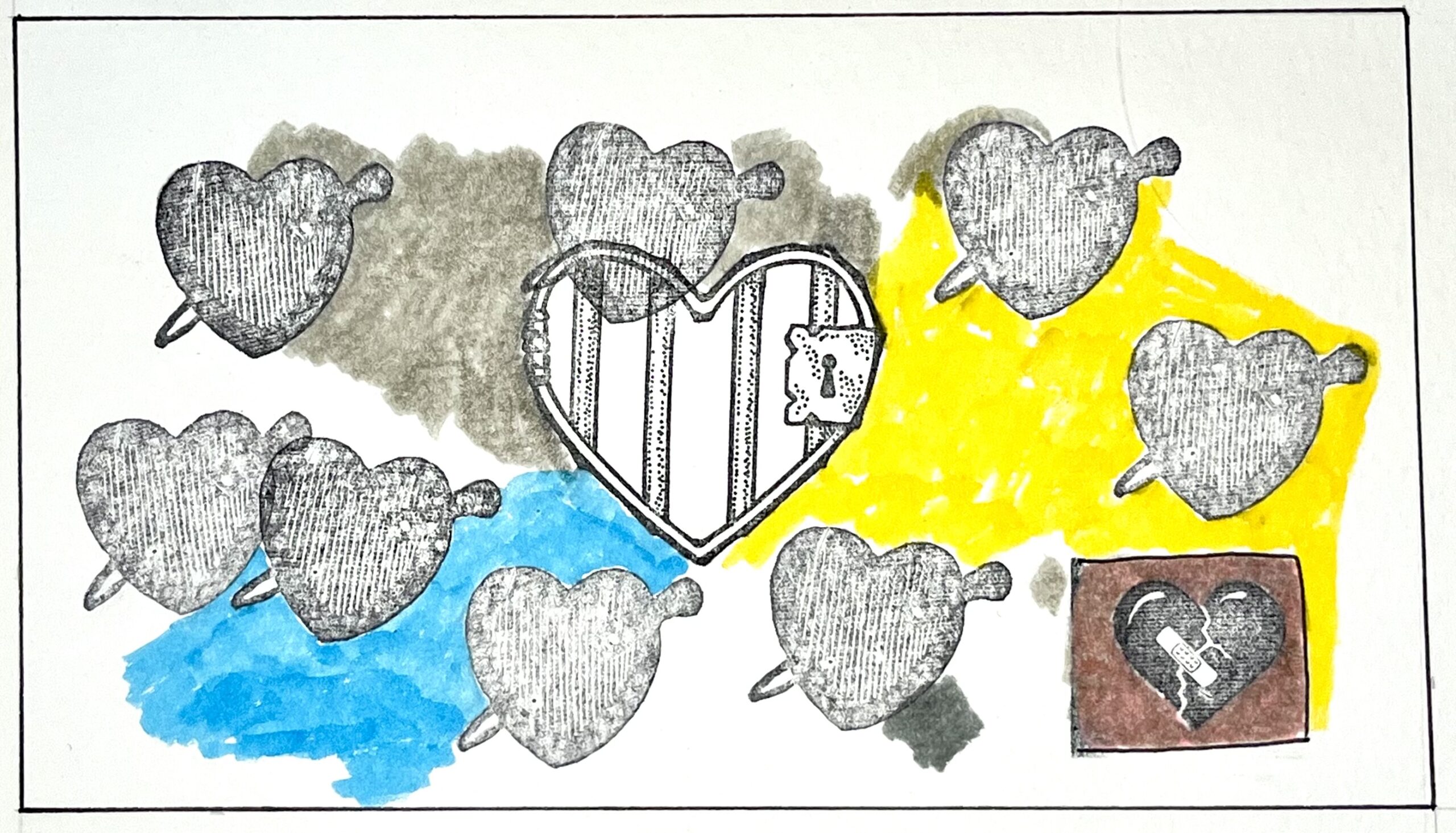Responding to Violence with Care
Kristin Collins
17 November 2023How different might our society look if public safety could be reimagined as caring for people and communities?

I recently attended a conference where a presenter asked us to imagine a place where we feel safe. People began to call out visions of cozy beds, fireplaces, and family dinners. She asked us to think more broadly, and people talked about access to healthcare, clean water, and good schools. Not a single person envisioned a prison, a police officer, or an execution chamber — even though most Americans are taught to believe they are the keys to our safety.
Every human being wants and deserves safety. But the question is: What makes us safe? In the United States, we’ve mostly chosen to spend our public safety budgets on arresting, incarcerating and executing people we deem criminals. We have the second largest prison population in the world behind China, with nearly 2 million people behind bars — including almost 50,000 children. We are one of only a handful of developed countries that continue to use the death penalty.
How different might our society look if public safety could be reimagined as caring for people and communities?
I work at the Center for Death Penalty Litigation, which represents people facing the death penalty in North Carolina. Let me tell you about one of the 138 people on North Carolina’s death row. Nathan, like most people on death row, grew up in crushing poverty in a neighborhood where violence and trauma were everyday occurrences. His mother struggled with addiction, and he barely knew his father. He often went hungry. He entered foster care at 12 and spent most of his teen years in a boy’s home where children were physically and sexually abused. At 20, he committed a shooting fueled by family loyalty and the kind of street justice that was the norm in his world. He has spent the past 30 years on death row.
Now imagine a world where Nathan, his family, and his community received the care they needed. Imagine if violence in Nathan’s neighborhood had been treated as a public health issue. Imagine if leaders had sought data-driven solutions to gun violence and child poverty, rather than pursuing punishment-based policies rooted in a desire for revenge. Imagine neighborhood task forces dedicated to peaceful resolution of conflicts, treatment of at-risk people, and the mobilization of communities to solve their own problems. Imagine job training and youth programs. Imagine neighborhoods with equal access to high quality schools, healthcare, housing, and food.
Instead of investing in Nathan as a child, our country has invested untold sums in prosecuting, incarcerating, and litigating his appeals. If he is eventually strapped down and executed, what will have been gained? Who will be safer?
We can probably all agree that violence prevention is preferable to punishing crime after it happens. But even an ideal society, violence will still exist. It’s a fact of human existence. You may be wondering, how do we deal with crime once it happens? Do we let criminals off scot-free?
Again, I ask you to shift your perspective from punishment to care, because if we could punish our way out of violence, the United States would be the safest place on the planet. Restorative justice is a process that can bring all parties together to understand why the crime happened and how best to facilitate healing. Survivors decide what they need to heal, and those who have caused harm take accountability and learn the impact of their actions. Some of the most effective restorative justice programs have been built in communities facing the most violence, and in Durham, the process was recently used to resolve a homicide case.
I’ve visited Nathan on death row many times, and the person I’ve met is kind, bright and funny. He has thought deeply and taken responsibility for his actions. He has spent decades wishing he could offer something to the families of the victims, but in our carceral system, there is no way for the two sides to communicate.
As a country, we need to start asking not just how to punish violence, but how to prevent it and how to heal it. The answers all start with taking care of people.
Take Action: Do you live in North Carolina? On Dec. 2 in Raleigh, we will gather to ask Gov. Cooper to commute North Carolina’s death sentences to prison terms. Please join us and help spread the word. Learn more and register here.
Read More: A beautiful essay from death row prisoner Paul Brown about an example of caring on death row.
Jack Payden-Travers
Thanks, Kristin for a thoughtful essay.